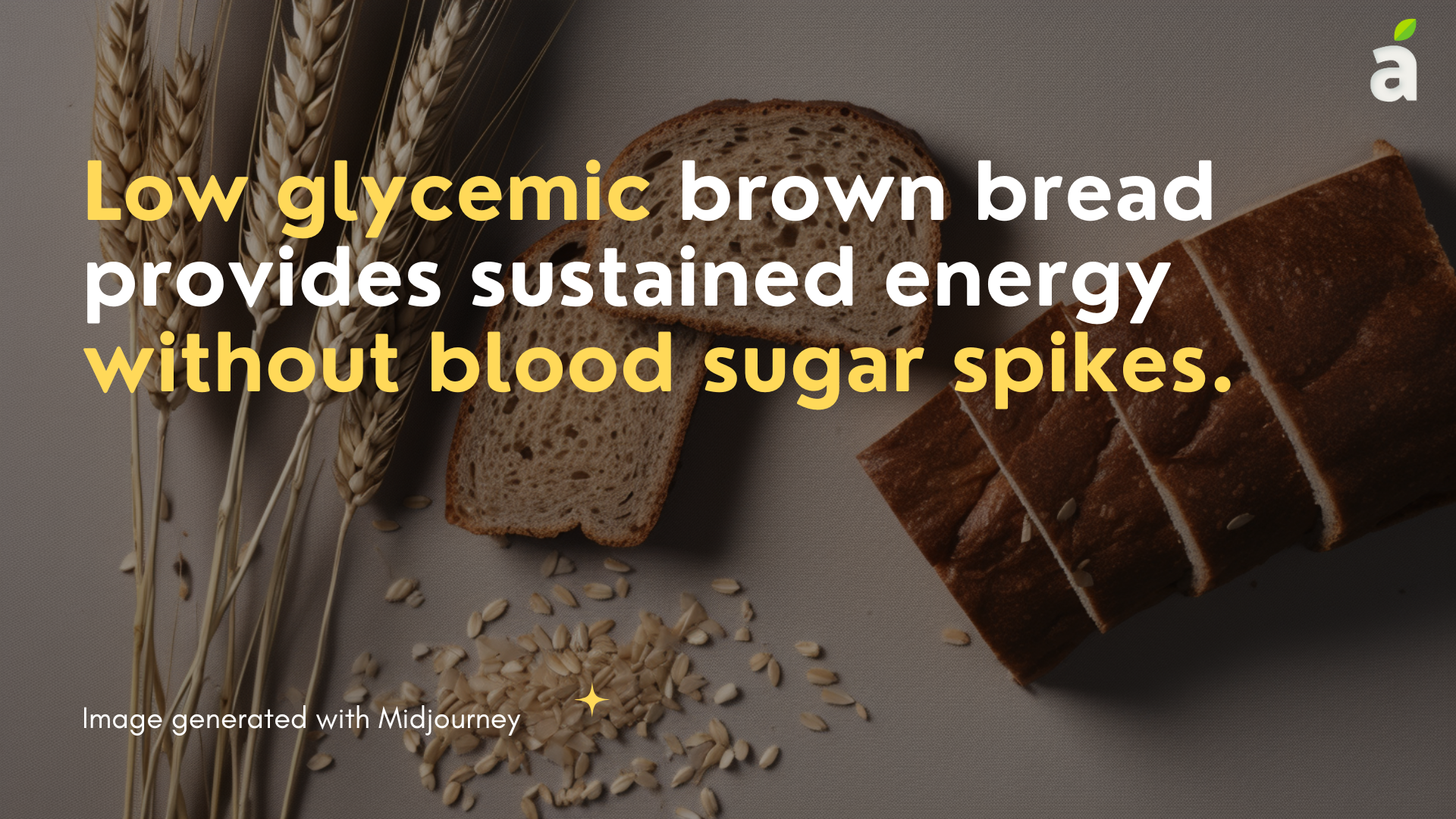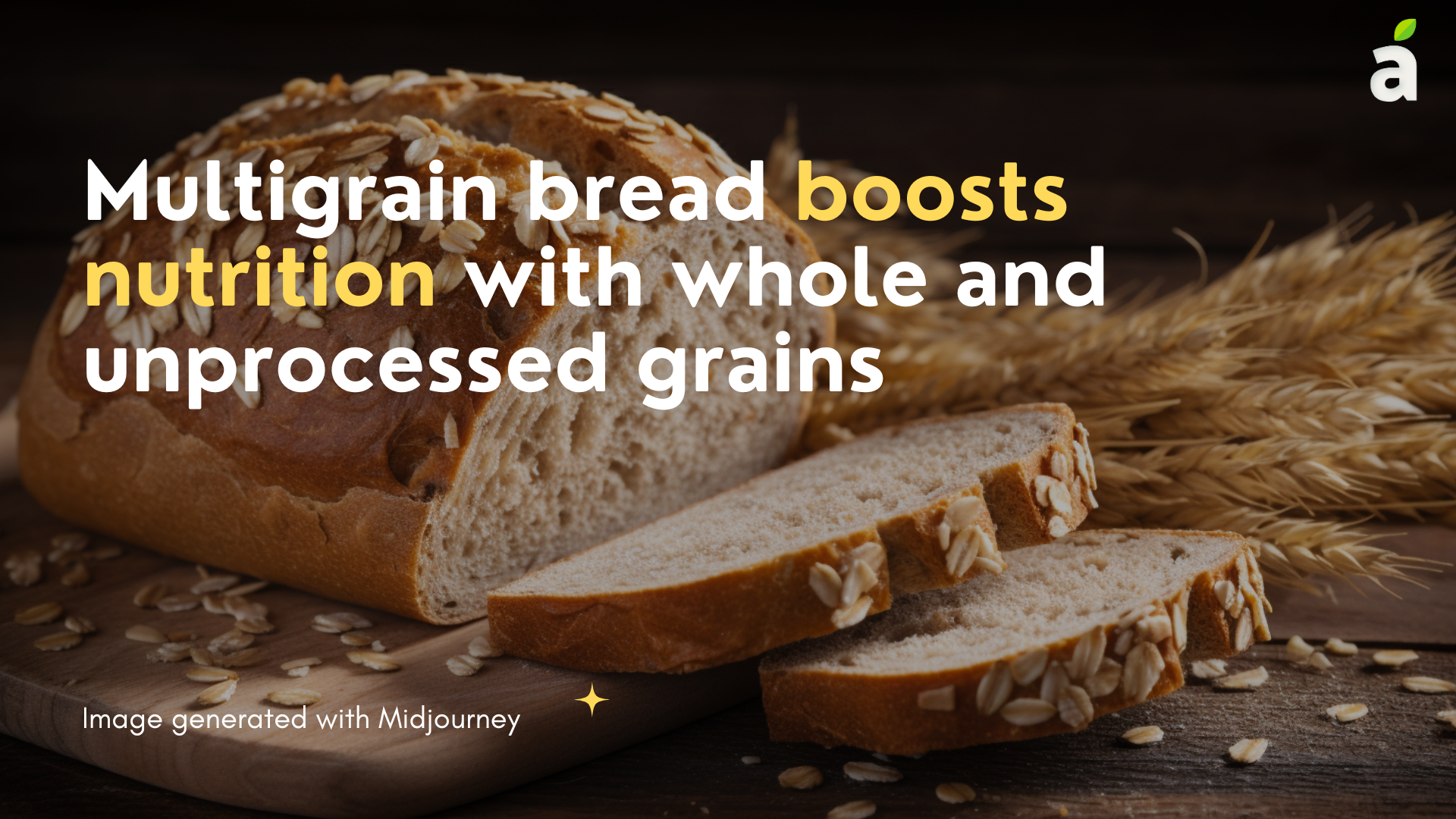Published Date January 24, 2003
Brown Bread: The Wholesome Delight
By Naurin Ansari
3 min read
Last update date: January 24, 2003

In the realm of bread, there's a nutritional gem that stands out—brown bread. With its hearty texture and wholesome flavour, brown bread has gained popularity among health-conscious individuals. In this blog, we will delve into the world of brown bread, understand what it is, explore its advantages, and compare it to its counterpart, white bread.
What is Brown Bread?
Brown bread, also known as whole wheat bread, is made from whole grains that retain the bran and germ, unlike refined white bread. These grains, typically wheat, are minimally processed, preserving their natural nutrients, fibre, and essential minerals. This results in bread that has a darker colour, denser texture, and richer taste than white bread.[1][2]
Advantages of Brown Bread
- Nutritional Powerhouse: Brown bread packs a nutritional punch because it is a great source of dietary fibre, which aids in digestion, promotes satiety, and helps regulate blood sugar levels. Additionally, it contains essential B vitamins, such as folate and niacin, which contribute to energy production and overall well-being.
- Rich in Whole Grains: The inclusion of whole grains in brown bread provides a wide range of health benefits. Whole grains are associated with a reduced risk of heart disease, stroke, and certain types of cancer. They also provide antioxidants, which protect the body against oxidative stress and inflammation.
- Weight Management: Brown bread, with its high fibre content, plays a role in appetite control by providing a feeling of fullness that lasts for an extended period. This can support weight management goals and contribute to a well-balanced diet.[3][6]
Brown Bread vs. White Bread
When comparing brown bread and white bread, several key differences come to light:
- Fibre Content: Brown bread surpasses white bread in fibre content. The bran and germ in whole grains provide ample dietary fibre, crucial for a healthy digestive system and regular bowel movements.
- Nutrient Profile: Brown bread shines when it comes to essential nutrients. It contains higher levels of vitamins, minerals, and antioxidants compared to white bread, as the refining process strips away many of these beneficial components.
- Glycemic Index: Brown bread generally has a lower glycemic index. It means that it releases glucose into the bloodstream slower than other types of bread. This prevents rapid spikes in blood sugar levels and provides sustained energy.[4][5]
Takeaway
Brown bread stands as a nutritional powerhouse that offers numerous advantages over its refined counterpart. With its intact whole grains, higher fibre content, and richer nutrient profile, brown bread emerges as a healthier choice. By incorporating brown bread into your diet and removing white bread, you can enjoy the benefits of increased fibre intake, improved digestion, reduced sugar intake, and better overall health.
So, the next time you're in the bread aisle, consider opting for a loaf of brown bread and savour the wholesome delight it brings.
References
- https://wellversed.in/blogs/articles/which-is-better-white-bread-vs-brown-bread
- https://www.wise-geek.com/what-is-brown-bread.htm
- https://timesofindia.indiatimes.com/life-style/health-fitness/diet/bread-for-weight-loss-white-vs-brown-vs-multigrain-which-is-better-to-lose-weight/photostory/82857790.cms?picid=82857798
- https://wellversed.in/blogs/articles/which-is-better-white-bread-vs-brown-bread
- https://www.wellcurve.in/blog/white-bread-vs-brown-bread/
- https://weightowellnessllc.com/include-brown-bread-in-your-diet/#:~:text=Brown%20Bread%20is%20a%20delicious,%2C%20cancer%2C%20and%20heart%20disease.
Keep reading
Choose Healthy With Us.
Know the real truth about your food. Stay informed and healthy, for free.

Download the App Now
Certified nutritionists trust our food recommendations. Safe to say, so can you :)











